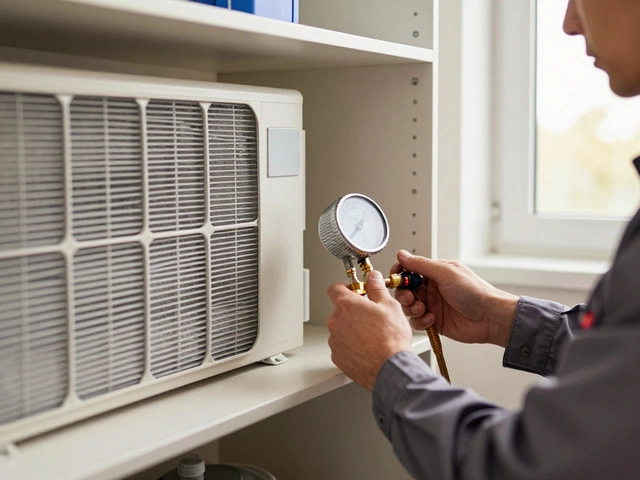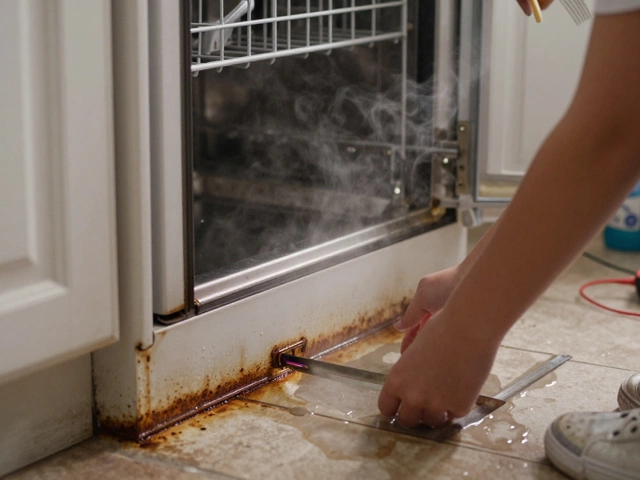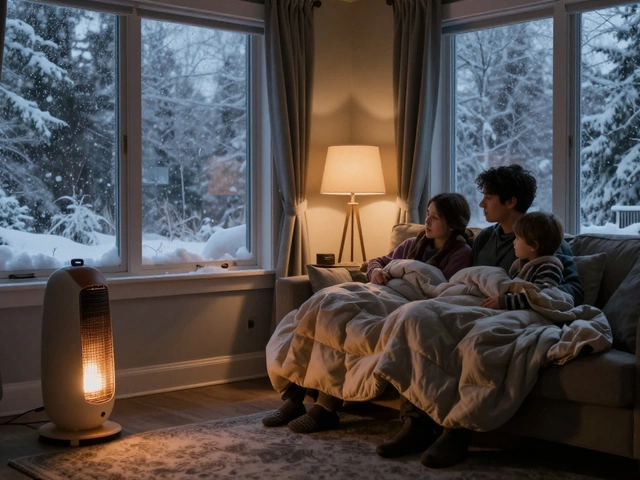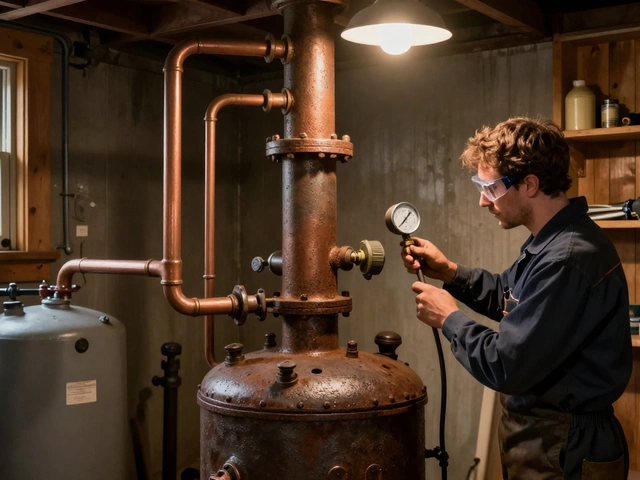Nothing ruins your morning routine like stepping into the shower and getting hit with ice-cold water. One minute you’re enjoying steamy comfort, and the next you’re shivering—but why does hot water just quit out of nowhere?
Before you start stressing about expensive repairs, check the basics. Sometimes the answer is as simple as a flipped breaker or an empty gas tank. If you live with others, it could be that someone used up all the hot water for a long shower. Give it about 30 minutes—your tank might just need time to heat up more water.
Notice a pilot light that’s out on a gas heater? That’s a common cause and usually easy to fix. On electric heaters, a tripped breaker or a reset button that popped out could be the culprit. These little things can knock out your hot water supply in seconds.
- Spotting the Obvious Stuff
- Common Culprits Behind Cold Water
- DIY Checks and Quick Fixes
- When It’s Time to Call a Pro
- Keeping Your Hot Water Flowing
Spotting the Obvious Stuff
Before calling anyone or thinking your water heater is completely shot, check the no-brainers. You’d be surprised how many folks miss the simple stuff first. Most hot water problems start with something basic. Here’s what you want to look for right out of the gate.
- Check the Power or Gas Supply: If you have an electric water heater, head to your breaker box. See if the breaker tripped. Just flip it off and back on. If it’s a gas heater, confirm the pilot light is burning. No flame means no hot water, period.
- Is the Water Heater Switched On? Yep, it’s easy to bump the switch off accidentally, especially if your heater’s in a garage or basement. Make sure the unit itself is actually turned on.
- Test Multiple Faucets: Sometimes the issue is just one fixture. Turn on hot water taps in the kitchen and bathroom. If you’re only freezing in the shower but getting hot water elsewhere, the problem isn’t your main water heater.
- Look for Obvious Leaks: Take a look around the base of the tank. Big puddles or steady dripping could mean you’ve sprung a leak and the tank can’t hold heated water. This also wastes energy and money.
- Check the Thermostat: Some folks turn the thermostat down to save energy and forget. Make sure yours isn’t set below 120°F (49°C)—lower, and you risk lukewarm misery, not to mention potential bacteria growth.
For context, here’s a quick breakdown of how often these quick fixes turn out to be the culprit when there’s no hot water:
| Obvious Cause | Percent of Cases |
|---|---|
| Tripped Breaker or Power Off | 40% |
| Pilot Light Out | 30% |
| Thermostat Set Too Low | 10% |
| Leak or Tank Empty | 10% |
| Fixture Problem (not main tank) | 10% |
Checking these basics won’t take more than ten minutes but can save you a call to the repair shop—and sometimes even fix the problem on the spot. Don’t skip them.
Common Culprits Behind Cold Water
Suddenly having no hot water usually points to some pretty specific issues with your system. You don’t need to be a plumber to spot some of these.
- Tripped Breakers or Blown Fuses: If you’ve got an electric water heater, a tripped breaker or blown fuse can cut power to your unit in a heartbeat. Head over to your electric panel—if the breaker for the water heater is in the off position, flip it back on.
- Pilot Light Problems: Gas water heaters rely on a steady pilot light. If it’s gone out, your burner won’t fire, and you get nothing but cold water. Relighting the pilot is usually straightforward, just follow the instructions found on the heater (or on the manufacturer’s website).
- Faulty Heating Elements: For electric heaters, heating elements are the muscle behind warming your water. Over time, these can burn out. When both elements fail, you’re left without any hot water at all.
- Broken Thermostat: The thermostat controls the temperature, and if it stops working, it won’t signal your heater to do its job. Suddenly, that steamy shower turns chilly.
- Gas Supply Issues: No gas, no heat. Sometimes, the gas valve is turned off or there’s a disruption in supply. Double-check any recent work on your home that might have affected gas lines.
- Leaking Tank: Water pooling at the bottom of your heater is a bad sign. A major leak can make your heater useless, and it usually means a replacement is needed.
According to the U.S. Department of Energy, the average lifespan of a tank water heater is 8-12 years. If yours is older than that and you’re regularly losing hot water, age could be the main reason (and probably the time for a new one).
Even sediment build-up inside the tank can throw things off. The minerals in hard water settle at the bottom, cutting off heat transfer and making your heater work overtime—or simply stop heating.
| Issue | Typical Cause | DIY or Pro? |
|---|---|---|
| No power | Breaker tripped/fuse blown | DIY |
| No flame | Pilot out/gas off | DIY |
| No heat | Element/thermostat failed | Pro |
| Leaking tank | Corrosion/aging | Pro |
| Lukewarm water | Sediment build-up | DIY |
Figuring out the real cause behind your hot water problems saves you from unnecessary repairs and gets you back to warm showers faster—without playing guessing games.
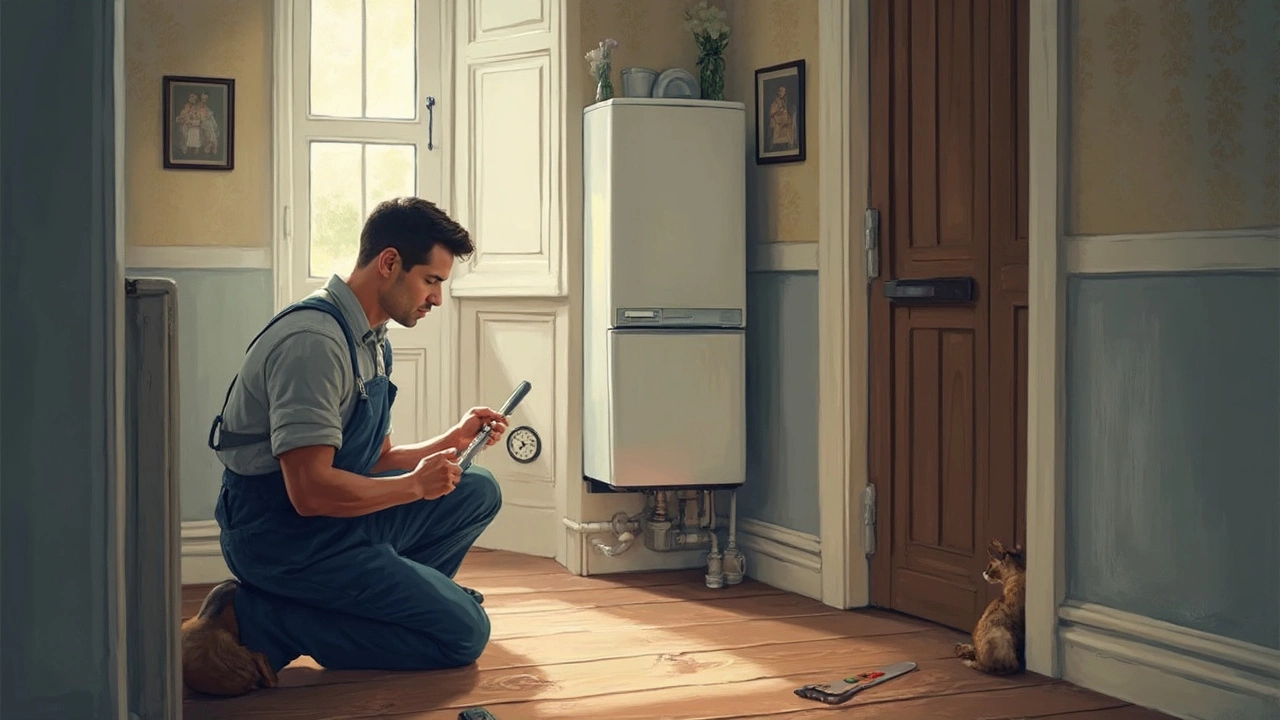
DIY Checks and Quick Fixes
Let’s get hands-on and tackle some common causes you can actually fix yourself. These basic checks can help you restore your hot water without having to call for water heater repair right away.
1. Check Your Power or Gas Supply
- Electric water heaters: Go to your breaker box. If the breaker for the water heater is flipped, turn it back fully off, then on. Some units have a reset button right on the heater—usually a small red button. Press it solidly. If it clicks, that might do the trick.
- Gas water heaters: Look for the pilot light. Is it off? Most models have a clear window showing the blue flame. If it’s out, look at the sticker instructions on your tank to relight safely. Don’t smell gas? Good. If you do, skip the DIY—call a pro.
2. Peek at the Thermostat
- Turn the dial to 120°F for the best combo of comfort and safety. Anything too low and the water won’t get hot. Too high, and you’ll risk scalding.
- If your heater still puts out cold water, the thermostat could be broken. At that point, a pro should take over.
3. Make Sure the Tank Isn’t Draining
- Check for leaks around your tank or any puddles nearby. Leaks mean trouble—call a water heater repair technician if you see water where it shouldn’t be.
- Some heaters have a drain valve that might accidentally be left open. Make sure it’s closed tight.
4. Sediment Buildup: Quick Flush
- If your water comes out hot for a second and then goes cold, you could have sediment sitting at the bottom of the tank. Over 75% of U.S. homes have some hard water, which is rough on heaters.
- To flush, turn the unit off and hook up a garden hose to the drain valve. Let a couple gallons drain, then shut it tight, and power back up. If this helps, you’re back in business.
| Water Heater Issue | DIY Fix? |
|---|---|
| Tripped breaker/reset button (electric) | Yes |
| Pilot light out (gas) | Yes, if safe |
| Thermostat mis-set | Yes |
| Leaking tank | No |
| Heavy sediment clog | Maybe, depends on buildup |
If you work through this list and still have no hot water, it’s probably time to bring in an expert. But for a lot of folks, a quick check and a flip of a switch solve the problem faster than you’d think.
When It’s Time to Call a Pro
Sometimes no hot water means there’s a big problem you just can’t fix with a simple reset or a new fuse. If water is leaking from your tank, you notice rust-colored hot water, or you hear popping or rumbling noises, it’s time to stop troubleshooting by yourself. Water heaters are no joke—they mix electricity or gas with water, and things can get dangerous fast.
Here’s when you really need to bring in a licensed plumber or water heater repair specialist:
- Your water heater is more than 10 years old and keeps breaking down. Old tanks are prone to failure and can start leaking suddenly.
- You see water pooling around the base, which often means the tank itself is cracked. Tanks can burst when they go, and that’s a mess you don’t want in your home.
- There’s a funny metallic smell or your water looks rusty — this is a big sign the tank lining is failing or your pipes are corroded.
- The pilot light keeps going out, or you smell gas; this isn’t a DIY job. Gas leaks are fire hazards and should be handled by certified pros.
- Electric water heaters trip the breaker again and again, or you find signs of burnt wiring.
According to recent industry surveys, around 30% of water heater repair calls end with a full replacement. Newer, more efficient models usually pay for themselves in energy savings within a few years. Here’s a quick look at average costs to keep in mind:
| Issue | Typical Cost Range (USD) |
|---|---|
| Repair (minor leak, thermostat) | $150 - $500 |
| Water heater replacement | $900 - $2,800 |
If you’re not sure whether the job is too big for you, ask yourself: “Am I comfortable turning off my home’s power or gas supply safely?” If the answer is no, get a pro. You’ll save yourself a headache—and potentially a lot more money if something goes wrong with a botched repair.
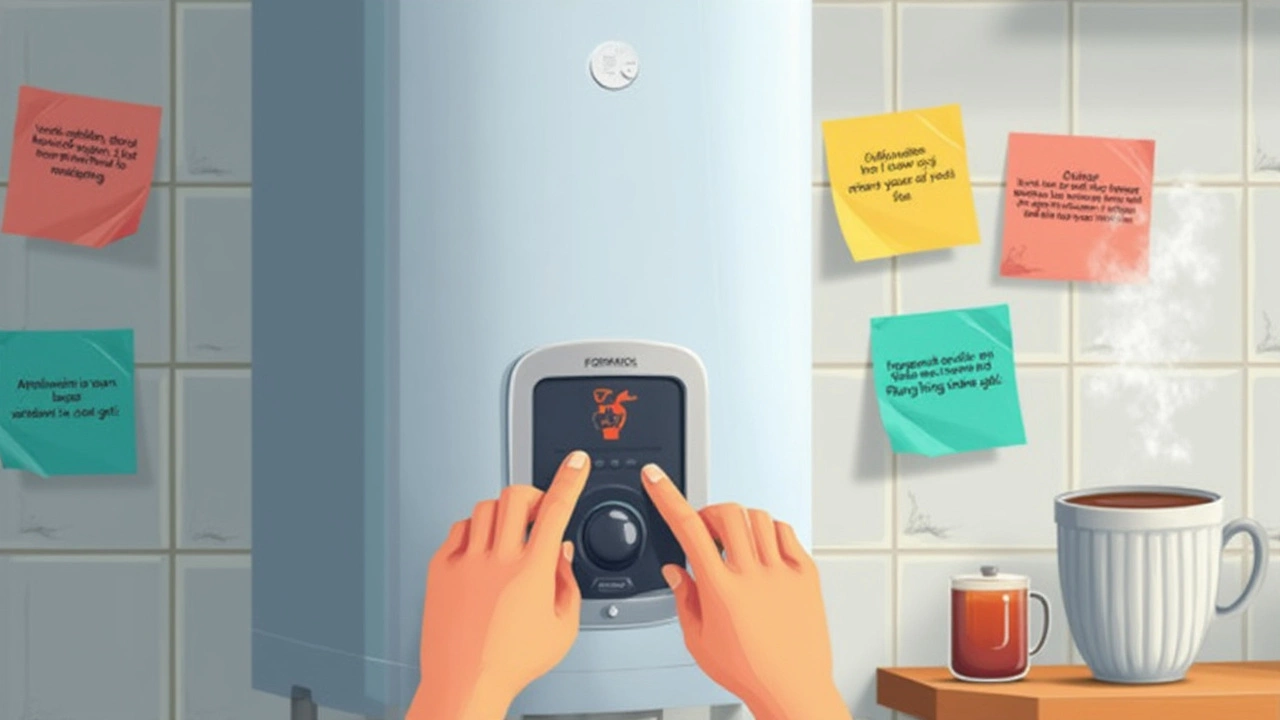
Keeping Your Hot Water Flowing
If you’re tired of surprise cold showers, a little maintenance goes a long way for your water heater. The trick is staying ahead of problems so you never have to worry about losing hot water again. Don’t wait for something to break—plan regular tune-ups.
- Flush the tank once a year. Sediment builds up fast, even in newer units, and it’s a leading cause of weak or vanishing hot water. A simple flush clears out the gunk, helps your system last longer, and keeps the water heating evenly.
- Test the temperature and pressure relief valve. This valve is your safety net. Just lift it up slightly and see if water flows out the discharge pipe. If nothing happens—or if water doesn't stop afterward—it might be time to replace it.
- Check for leaks and rust. Even a tiny drip can ruin the whole system over time. Keep an eye on the base of the tank, the pipes, and fittings. Catching leaks early usually means a quick, cheaper fix.
- Insulate the heater and pipes. This isn’t just for winter. Insulation helps hold heat in, so the water stays hotter and you save on bills. It’s a DIY job that pays off quickly.
- Set the thermostat to 120°F. Any hotter and you’re wasting energy (and risking burns). Even for those who love extra-steamy showers, this is the sweet spot for most homes.
Need a cheat sheet? Here’s how often most pros recommend common water heater repair checks:
| Task | Frequency |
|---|---|
| Flush Tank | Once a year |
| Check T&P Valve | Every 6 months |
| Inspect for Leaks | Every 3 months |
| Insulate Pipes | Every winter (or as needed) |
Even after all these tips, if your hot water still surprises you by disappearing, it might be time for a new unit. Most water heaters last about 8-12 years. If yours is older, upgrading can cut energy bills and stop the guesswork for good. If you’re not sure what’s best, ask a trusted tech for advice—they deal with hot water problems every day.

